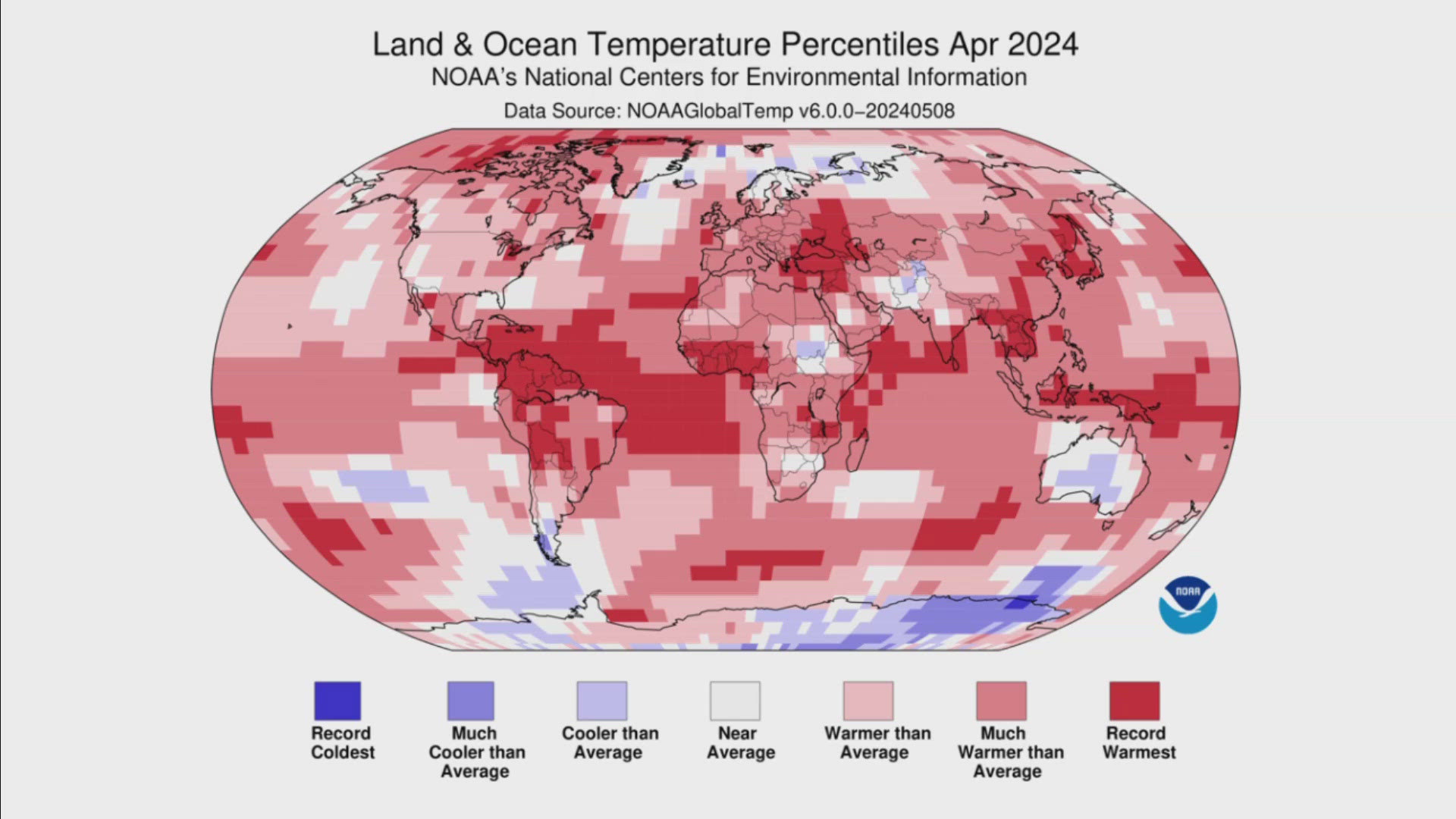WASHINGTON — The current drought conditions developed in the nation’s capital after an extended period of drier than average weather that dates back to last August.
Last Saturday’s beneficial rainfall helped slow its expansion as Thursday's updated drought monitor index shows. Additional rain is in the forecast over the next few days and will help make up some of the rainfall deficit that’s developed.
Washington, D.C.’s cumulative rainfall deficit dating back to last August is nearly 8 inches and should remind longtime Washingtonians of other extended dry periods. There were 25 drier than average months at National Airport during the 32-month period of August 2015 to March 2018. That produced an accrued rainfall deficit of 16.42 inches for the nation’s capital.
This was such a dry period in the Mid-Atlantic Region that Washington, D.C. had 11 consecutive drier than average months from June 2016 through April 2017.
That led to two periods of moderate to severe drought conditions in the D.C. Metro Area, one from November 2016 to May 2017 and December 2017 to April 2018. Despite its drier than average start, 2018 finished as D.C.’s rainiest year on record so the drought conditions came to an end by the summer of 2018.
August 2019 and September 2019 were both exceptionally dry months in the nation’s capital that led to short-lived but moderate drought conditions. However, a rainy October brought an end to that. That’s similar to the very hot summers of 2010 and 2012. Not only were they hot, but each featured below average rainfall that combined to produce short-term moderate drought conditions.
The last time the nation’s capital experienced extreme drought conditions was in October 2007. Following one of the driest Septembers on record, October 2007 got off to a hot and dry start. Not only did several days in the 90s occur, but no measurable rainfall occurred that month until Oct. 19.
That combination of hot and dry weather produced widespread severe to extreme drought conditions across most of the DC Metro Area. However, over 6 inches of rain occurred in the nation’s capital over a four-day stretch in late-October 2007 that brought an abrupt end to those drought conditions.
The two-year period of 2001-2002 was also quite dry in the nation’s capital.
Of those 24 months, only eight were wetter than average. Moderate to severe drought conditions existed for the 12-month period of November 2001 to November 2002.
A whole scale change in the weather pattern began during a rainier than average October 2002. The 2002-2003 winter that followed was one of the snowiest on record in Washington, D.C. before 2003 finished as DC’s third rainiest year on record according to NOAA.
This helps illustrate that while periods of drought sometimes occur in the nation’s capital, they’re often short-lived. NOAA’s outlook for May calls for above average temperatures with near average rainfall in the DC Metro Area.



